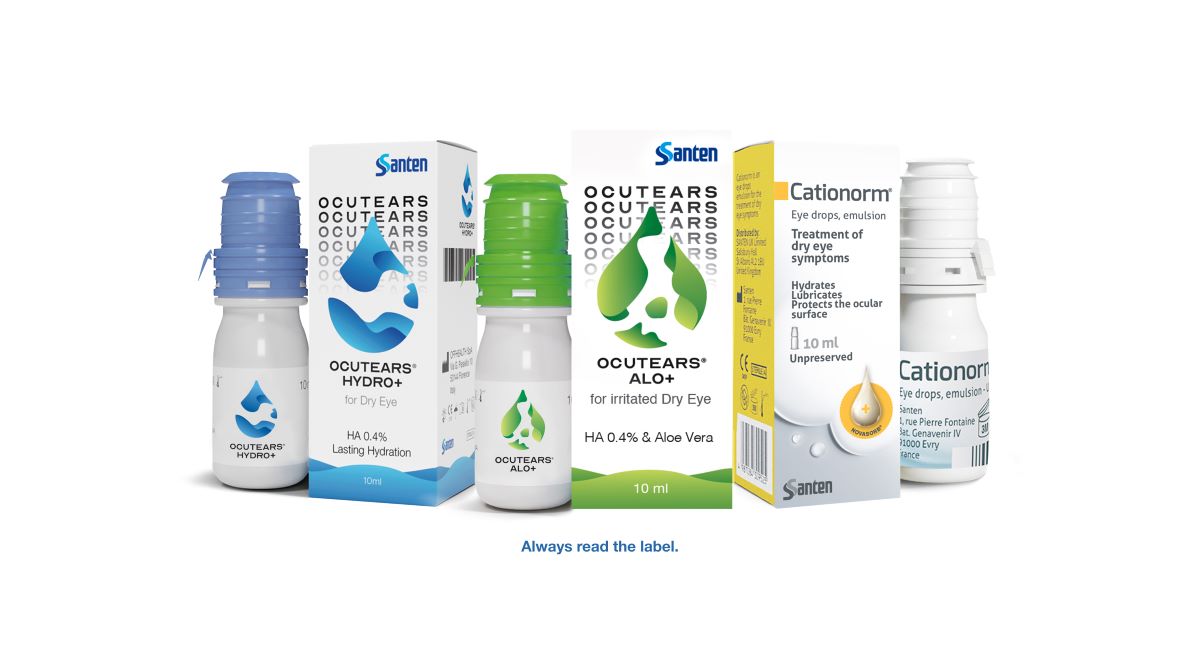Advertorial promotion
From a natural day look to evening glam, makeup can play a feel-good role in our daily routine. Whether the perfect cat eye or voluminous mascara, makeup can enhance our features and allows us to express our individuality. Amidst all the glamour however, it’s important to remember the importance of our eye health.
With over 130 years of Santen eye care expertise behind us, we understand that the eyes are not just the window to the soul but also sensitive, complex organs that require care and attention, especially if you suffer from dry eye symptoms.
We’re here to help you spot the signs of potential harm caused by makeup and skincare products, plus tips to establish a more hygienic eye health friendly makeup routine.
Signs makeup could be harming your eyes:
There are several reasons why your makeup could be harming your eyes.
Preservatives are added to stop or slow the growth of bacteria, fungus, yeast and mould in eye makeup, makeup removers and moisturisers but some of them can cause irritation and allergic reactions.
Makeup can transfer on to the eye’s surface, blocking tear glands and interfering with the tear film.
And those old favourite products we like to use time and time again can harbour germs and bugs which put your eyes at the risk of infection.
The signs your make-up could be causing your eyes grief include many of the symptoms of dry eye, which happens when your eyes aren’t producing enough tears or the water / oil balance in your tears is a bit off.
Symptoms include redness, itchiness, grittiness and a sensitivity to light.
Other signs include pain or a burning sensation, a discharge from the eye, swelling or foamy tears.
How to protect your eyes when wearing makeup:
While makeup can cause problems, you can minimise the risk in just a few simple steps to help keep those precious peepers healthy.
- Out with the old: Replace makeup products within three months of opening.
- Cleanliness: Wash your hands before applying makeup and use fingertips instead of brushes and sponges where bacteria can thrive.
- Pick a pencil: Pencil products are more hygienic than liquid liners. Frequently sharpen them to keep them fresh.
- Never tightline: Also known as waterlining, don’t apply eyeline to the inner rim of the eyelids as it increases the risk of contamination and discomfort.
If you suspect your makeup is causing harm to your eye health, stop using it and seek healthcare professional advice.

Try Ocutears® Eye Drops
Santen’s range of artificial tear drops are specifically formulated to help hydrate, lubricate and protect for long-lasting relief from the symptoms of dry eyes.
Ocutears® Alo+ with aloe vera relieves symptoms of red, irritated and sensitive eyes for prolonged freshness and long-lasting comfort.
Along with Ocutears® Hydro+, it’s specifically formulated with 0.4% cross-linked sodium hyaluronate – which works to help moisturise and soothe – so that the eye drops stay in place for longer*.
Cationorm®, for mild to severe symptoms, is a first-of-a-kind eye drop that acts like the body’s natural tears. It uses ionic technology and a clinically proven triple-acting formula to help restore moisture, protect the eye’s surface and relieve irritation.
The range is preservative free and suitable for contact lens wearers.
Find out more at ocutears.co.uk
Always read the label.
*Compared to alternative eye drops which aren’t formulated with cross-linked HA.







